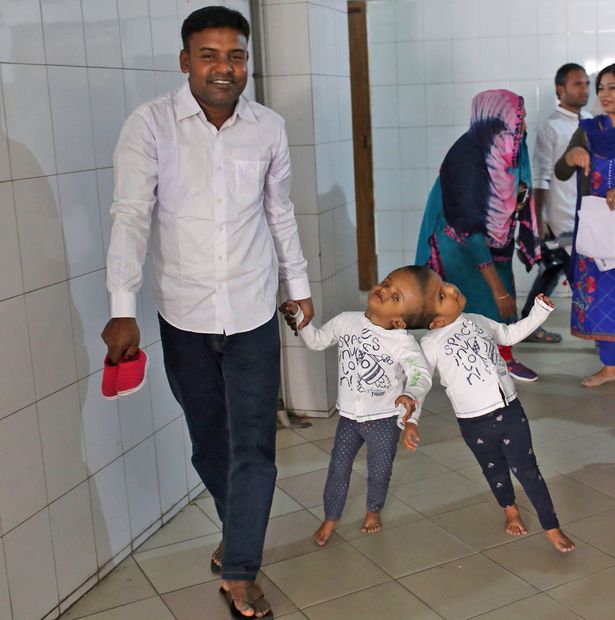Hungarian Surgeons separate twins conjoined on the head in a 30 hours operation
A team of Hungarian doctors successfully performed the final separation of Bangladeshi twins who were conjoined at the head.
A Budapest-based foundation, Cselekves a Kiszolgaltatottakert (Action For Defenceless People Foundation), made this known on its website on Friday.
The foundation said that the 3-year-old girls – Rabeya and Rukaya – were recuperating after the complex, 30-hour surgery.
Much of their brains’ vascular system and bone tissue had to be replaced with implants.
The medical team comprised 35 Hungarian doctors led by Budapest neurosurgeon Andras Csokay.
The surgery was performed in the Bangladeshi capital Dhaka.

The operation was financed by the foundation over several operations.
Three operations were needed to separate the craniopagus-type twins. Their condition is a rare phenomenon that affects one in every 2.5 million live births.
The process began last year in Dhaka with the separation of the shared cerebral vein parts.
Earlier this year, inBudapest, the twins were implanted with a special, Hungarian-designed system to expand their skin and soft tissue.
Following the successful second surgery, Andras Csokay, the neurosurgeon involved in the case, told Euro News it was a very complicated surgery with a high-mortality rate.

“The conditions of the twins are stable, but complications are possible,” the organisation said.
It said despite the risks the surgery would give the girls “better life opportunities” and open the door to new treatment options for otherconjoined twins.

Parents Taslima Khatun Uno and Mohammed, both teachers, didn’t learn that the twins were conjoined until after their birth.
The news follows a similar story of conjoined twins,Safa and Marwa Ulah, from Pakistan. In July, the girls, aged two, were successfully separated after a series of operations carried out at Great Ormond Street Hospital in London.
Their operations, totalling over 50 hours, were paid for by a private donor and used more than 100 members of hospital staff.
Sources





















